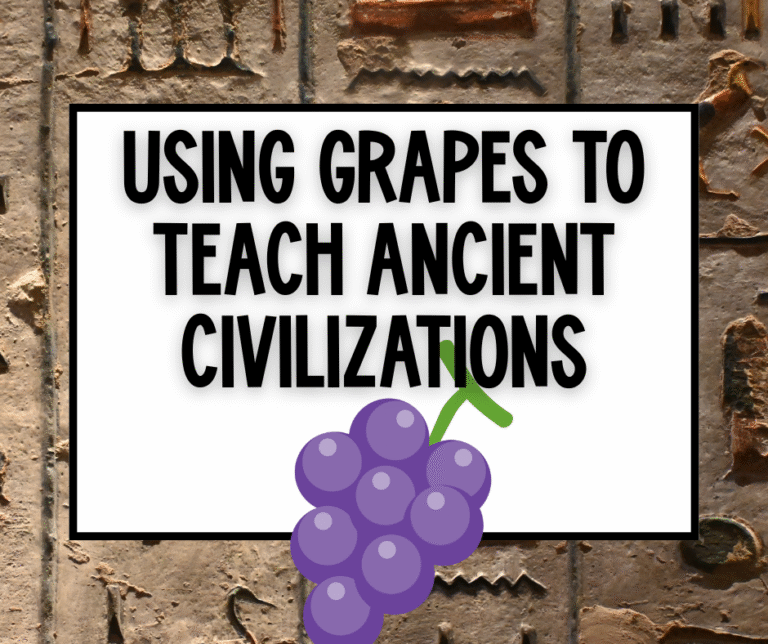Using GRAPES to Teach Ancient Civilizations: A Teacher’s Guide
Hey there, history-loving teachers! Are you ready to make ancient civilizations pop for your students? I know, I know, sometimes it feels like we’re trying to make them remember a million facts about places and people long, long ago. But what if I told you there’s a super fun, super effective way to break it all down?
Enter GRAPES! 🍇 No, not the kind you snack on (though a classroom snack wouldn’t hurt!), but an amazing acronym that helps students organize their thinking about ancient cultures. GRAPES stands for:
- Geography: Where in the world did this civilization thrive? How did their physical surroundings impact their lives? Think rivers, mountains, deserts – all the juicy details!
- Religion: What did they believe in? Who were their gods or goddesses? How did their faith shape their society and daily routines?
- Achievements: What amazing things did they invent, create, or discover? From writing systems to architectural marvels, every civilization left its mark!
- Politics: How were they governed? Who was in charge? What were their laws and social structures like? Kings, emperors, democracies – it’s all fascinating!
- Economics: How did they make a living? What did they trade? What kind of jobs did people have? Money, bartering, farming – the nuts and bolts of daily life.
- Social Structure: Who was at the top, middle, and bottom of their society? What were family roles like? This helps students understand the different lives people led.
Using GRAPES isn’t just about memorization; it’s about understanding the interconnectedness of a civilization. It provides a fantastic framework for comparing and contrasting different ancient societies, too.
Strategies for Bringing GRAPES to Life in Your Classroom:
- Start with an Overview: Before diving deep into each civilization, introduce GRAPES and explain what each letter stands for. Give them a “GRAPES cheat sheet” to refer to.
- GRAPES Notetakers: Create guided notes or graphic organizers where students can fill in information for each GRAPES category as they learn about a new civilization. This is perfect for differentiating!
- Visual Displays: Create a GRAPES bulletin board! As you study each civilization, add pictures, keywords, or student work under the relevant GRAPES heading. This makes for a fantastic visual anchor.
- Gallery Walks: This is where the magic really happens! Set up stations around your classroom, each focused on a different GRAPES category for a specific civilization. Students move from station to station, gathering information. It gets them up and moving, and it’s super engaging! Speaking of which, if you’re looking for an amazing, ready-to-go resource, you have to check out my Ancient Civilizations GRAPES Gallery Walk Bundle! It covers Egypt, Greece, and Rome with engaging readings and activities perfect for your classroom. Find it right here: Ancient Civilizations GRAPES Gallery Walk Bundle.
- Comparative Essays/Projects: Once students have studied a few civilizations using the GRAPES framework, challenge them to write comparative essays or create projects that highlight the similarities and differences in their GRAPES categories. This is fantastic for higher-order thinking!
- “Guess the GRAPES” Game: Give students clues about a civilization based on its GRAPES characteristics, and have them guess which civilization you’re describing. Fun and reinforces learning!
- Exit Tickets: A quick GRAPES-focused exit ticket at the end of a lesson can help you gauge understanding. “Tell me one achievement of Ancient Egypt” or “Describe the geography of Ancient Greece.”
Using GRAPES really simplifies the complexities of ancient civilizations and makes them so much more accessible for our students. It’s a game-changer for teaching history in an organized, memorable way!
How do you use GRAPES in your classroom? Share your favorite strategies in the comments below! Happy teaching!






